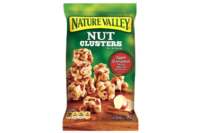During the recent and highly successful in-person PACK EXPO, Jorge Izquierdo, vice president of market development for PMMI, passed along some highlights from his 2021 PMMI “State of the Industry” report, including data noting a significant uptick in packaging equipment purchases. He reported the value of domestic shipments for packaging machinery increased 14.7 percent to $9.4 billion in 2020. That’s an amazing year for packaging—and a bellwether for the industry.
Multiple variables have applied pressure to food. COVID-19 has catalyzed growth in some product categories, as we have seen in multiple areas of snacks and baked goods, while negatively impacting other markets, like key aspects of foodservice and c-store business. Ingredient shortages and other supply-chain disruptions dictated hasty reformulations, while distribution faced its perennial challenges—sometimes resulting in empty supermarket shelves. Adding insult to injury, we’re dealing with an unprecedented labor shortage across sweeping swaths of global commerce. Meanwhile, consumer demographics have grown more entrenched on key purchase indicators like sanitary packaging, product nutrition, and sustainability.
Those factors can combine for some seriously bad weather—or a perfect storm for innovation. I’ve started getting back out into facilities to visit with the industry, and the overwhelming majority of people I’m talking to are working on doing more with less—investing in equipment, digging into better process control, adding more automation and robotics, more-strategic and flexible supply chains, etc. They’re employing approaches toward lean manufacturing and investing in personnel retraining and other types of workforce development. They’re looking back at what held them back over the past couple of years, where the competition caught them, and what will drive them to the next level.
As we emerge from the COVID-19 pandemic, we will find some of our perspectives changed. This includes how we engage with food—our preferred levels of convenience, packaging expectations, away-from-home dining, health and wellness goals, balancing product pricing with sustainability, etc. Foodservice in particular remains in the midst of some painful changes as operators identify strategies for concepts like contactless carry-out and delivery, use of indoor and outdoor space, table spacing, ghost kitchen opportunities, and more.
We’re moving through uncharted territory. As we navigate these waters, a lean, highly efficient approach will serve all of us well—as will a reliable map.
Across our October content, we continue our ongoing investigations into the vital areas of snack and baking that will prove instrumental moving forward, including the supply chain, plant efficiency, global industry perspectives, category data and analysis, and highlighted innovations.
If you have stories or strategies to share, please reach out to start a new discussion. We’d love to hear from you.





